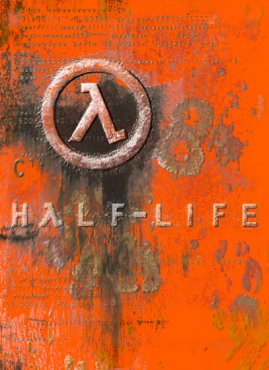
Half-Life is a 1998 first-person shooter (FPS) game developed by Valve Corporation and published by Sierra Studios for Windows. It was Valve's debut product and the first game in the Half-Life series. The player assumes the role of Gordon Freeman, a scientist who must escape from the Black Mesa Research Facility after it is invaded by aliens following a disastrous scientific experiment. The gameplay consists of combat, exploration and puzzles.

Half-Life: Opposing Force is an expansion pack for the first-person shooter game Half-Life. It was developed by Gearbox Software and published by Sierra On-Line for Windows on November 19, 1999. Opposing Force was the first expansion for Half-Life and was announced in April 1999. Lead designer Randy Pitchford noted that he believed Gearbox was selected to develop Opposing Force because Valve, the creators of Half-Life, wanted to concentrate on their future projects. Over the course of development, Gearbox brought in a variety of talent from other areas of the video games industry to help bolster various aspects of design.
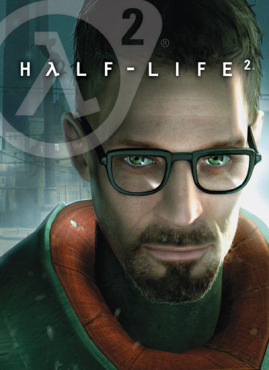
Half-Life 2 is a 2004 first-person shooter (FPS) game developed and published by Valve Corporation. It was published for Windows on Valve's digital distribution service, Steam. Like the original Half-Life (1998), Half-Life 2 combines shooting, puzzles, and storytelling, and adds new features such as vehicles and physics-based gameplay. The player controls Gordon Freeman, who joins a resistance to liberate Earth from the alien Combine empire.

The Black Mesa Research Facility is a fictional underground laboratory complex that serves as the primary setting for the video game Half-Life and its expansions, as well as its unofficial remake, Black Mesa. It also features in the wider Half-Life universe, including the Portal series. Located in the New Mexico desert in a decommissioned Cold War missile site, it is the former employer of Half-Life's theoretical physicist protagonist, Gordon Freeman, and a competitor of Aperture Science. While the facility ostensibly conducts military-industrial research, its secret experiments into teleportation have caused it to make contact with the alien world of Xen, and its scientists covertly study its life-forms and materials. In a catastrophic event known as the "Black Mesa Incident", an "anti-mass spectrometer" experiment conducted on Xen matter causes a Resonance Cascade disaster that allows aliens to invade Earth, and is the catalyst for the events of the series.

Half-Life: Blue Shift is an expansion pack for the first-person shooter video game Half-Life (1998). It was developed by Gearbox Software and published by Sierra On-Line. Blue Shift was the second expansion for Half-Life, originally intended as part of a Dreamcast port of Half-Life. Although the Dreamcast port was cancelled, the Windows version was released as a standalone product on June 12, 2001 for Windows. It was released on Steam on August 24, 2005.

Alien Hominid is a run and gun video game developed by The Behemoth and first released as a Flash game on the multimedia website Newgrounds on August 7, 2002. It was originally developed in Adobe Flash by programmer and Newgrounds founder, Tom Fulp, and animator and artist, Dan Paladin. It has since been re-released in several expanded and enhanced iterations for home consoles and computers.

The Combine are a fictional multidimensional empire which serve as the primary antagonistic force in the 2004 video game Half-Life 2 and its subsequent episodes developed and published by Valve Corporation. The Combine consist of organic, synthetic, and heavily mechanized elements. They are encountered throughout Half-Life 2, Half-Life 2: Episode One, and Half-Life 2: Episode Two, as well as Half-Life: Alyx, as hostile non-player characters as the player progresses through the games in an effort to overthrow the Combine occupation of Earth.

Gearbox Software is an American video game development company based in Frisco, Texas. It was established as a limited liability company in February 1999 by five developers formerly of Rebel Boat Rocker. Randy Pitchford, one of the founders, serves as president and chief executive officer. Gearbox initially created expansions for the Valve game Half-Life, then ported that game and others to console platforms. In 2005, Gearbox launched its first independent set of games, Brothers in Arms, on console and mobile devices. It became their flagship franchise and spun off a comic book series, television documentary, books, and action figures. Their second original game series, Borderlands, commenced in 2009, and by 2015 had sold over 26 million copies. The company also owns the intellectual property of Duke Nukem and Homeworld.

Aliens: Colonial Marines is a 2013 first-person shooter developed by Gearbox Software and published by Sega for PlayStation 3, Windows, and Xbox 360. Based on the Alien universe and set shortly after the events of James Cameron's 1986 film Aliens, the game follows a group of Colonial Marines, a fictional military unit, as they confront the Weyland-Yutani corporation in an effort to rescue survivors from the Sulaco spaceship. The game features a campaign mode that supports both single-player and cooperative gameplay, and a multiplayer mode in which players compete in different scenarios.

Capcom vs. SNK 2: Mark of the Millennium 2001 is the sequel to the fighting game Capcom vs. SNK. It was originally released on NAOMI hardware in arcades, with Sega handling the American arcade release. As in the original, players select a team of fighters from various Capcom and SNK games then fight other teams, winning each battle by defeating all the opponents from the other team.
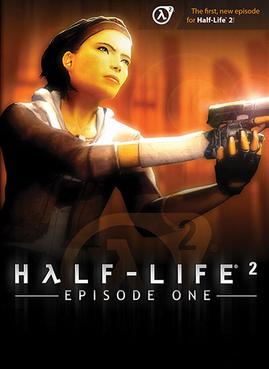
Half-Life 2: Episode One is a 2006 first-person shooter game developed and published by Valve for Windows. It continues the story of Half-Life 2 (2004); as scientist Gordon Freeman, players must escape City 17 with Gordon's companion Alyx Vance. Like previous Half-Life games, Episode One combines shooting, puzzles and storytelling.

Summoner is an action role-playing game developed by Volition and published by THQ. It was released as a launch title for the PlayStation 2 in 2000, and was subsequently ported to Microsoft Windows and Mac OS the following year. In the game, the player plays the role of Joseph and can assemble a team of compatriots and summon powerful monsters. The game has a world map, involved storyline, and unique hybrid combat system involving real-time and turn-based mechanisms.
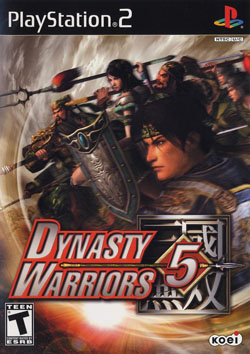
Dynasty Warriors 5 is a hack and slash video game set in China and the fifth installment in the Dynasty Warriors series, developed by Omega Force and published by Koei. The game was released on the PlayStation 2 and Xbox. It is based on the Chinese novel Romance of the Three Kingdoms by Luo Guanzhong.

Half-Life 2: Episode Two is a 2007 first-person shooter game developed and published by Valve. Following Episode One (2006), it is the second of two shorter episodic games that continue the story of Half-Life 2 (2004). Players control Gordon Freeman, who travels through the mountains surrounding City 17 to a resistance base with his ally Alyx Vance. Like previous games in the series, Episode Two combines shooting, puzzle-solving and narrative elements, but adds expansive environments and less linear sequences.
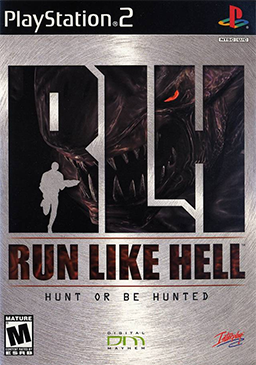
Run Like Hell is a third-person shooter video game developed by Digital Mayhem, published by Interplay Entertainment and distributed in Europe by Avalon Interactive for the PlayStation 2 in late 2002 and for Xbox in early 2003. In Japan, the PS2 version was released by Capcom in 2004.

Half-Life is a series of first-person shooter (FPS) games created by Valve. The games combine shooting combat, puzzles and storytelling.
This is a list of characters in the Half-Life video game series, which comprises Half-Life, Half-Life 2, Half-Life: Alyx, and their respective expansion packs and episodes.

Black Mesa is a 2020 first-person shooter game developed and published by Crowbar Collective. It is a third-party remake of Half-Life (1998) made in the Source game engine. Originally published as a free mod in September 2012, Black Mesa was approved for commercial release by Valve, the developers of Half-Life. The first commercial version was published as an early-access release in May 2015, followed by a full release in March 2020 for Linux and Windows.

Half-Life: Alyx is a 2020 virtual reality (VR) first-person shooter game developed and published by Valve. It was released for Windows and Linux, with support for most PC-compatible VR headsets. Set five years before Half-Life 2 (2004), players control Alyx Vance on a mission to seize a superweapon belonging to the alien Combine. Like previous Half-Life games, Alyx incorporates combat, puzzles and exploration. Players use VR to interact with the environment and fight enemies, using "gravity gloves" to snatch objects from a distance, similarly to the gravity gun from Half-Life 2.




















